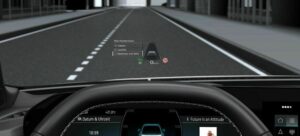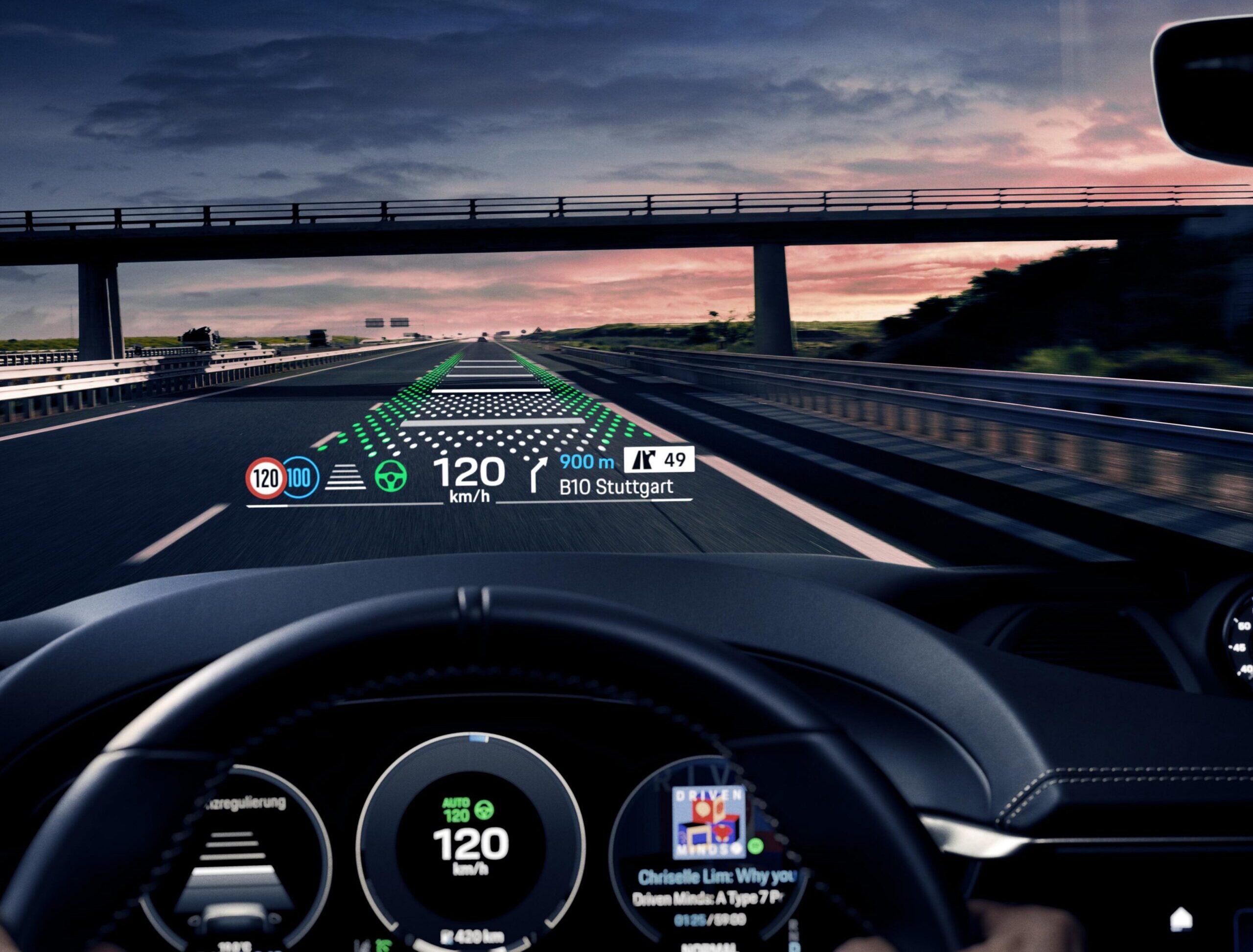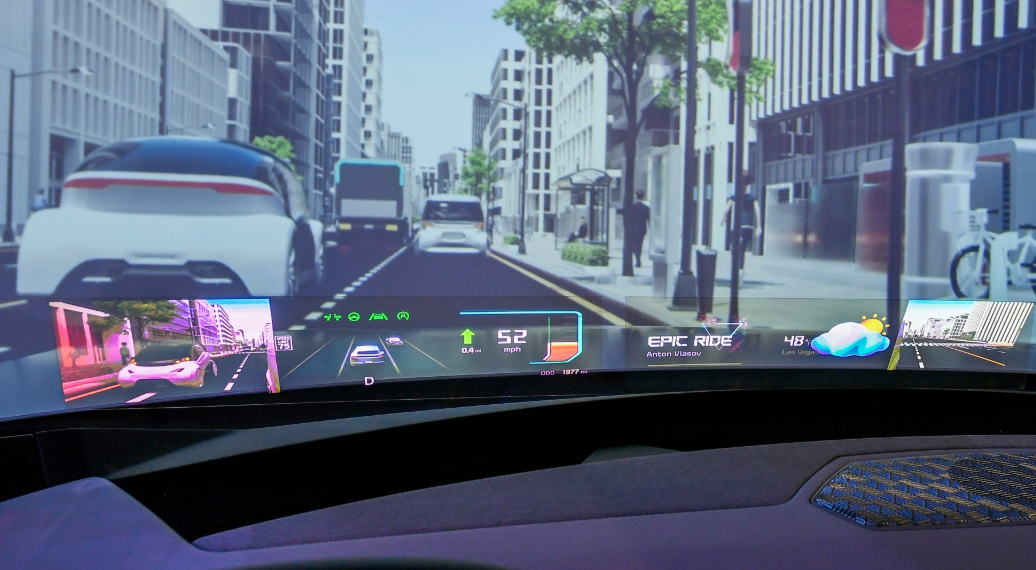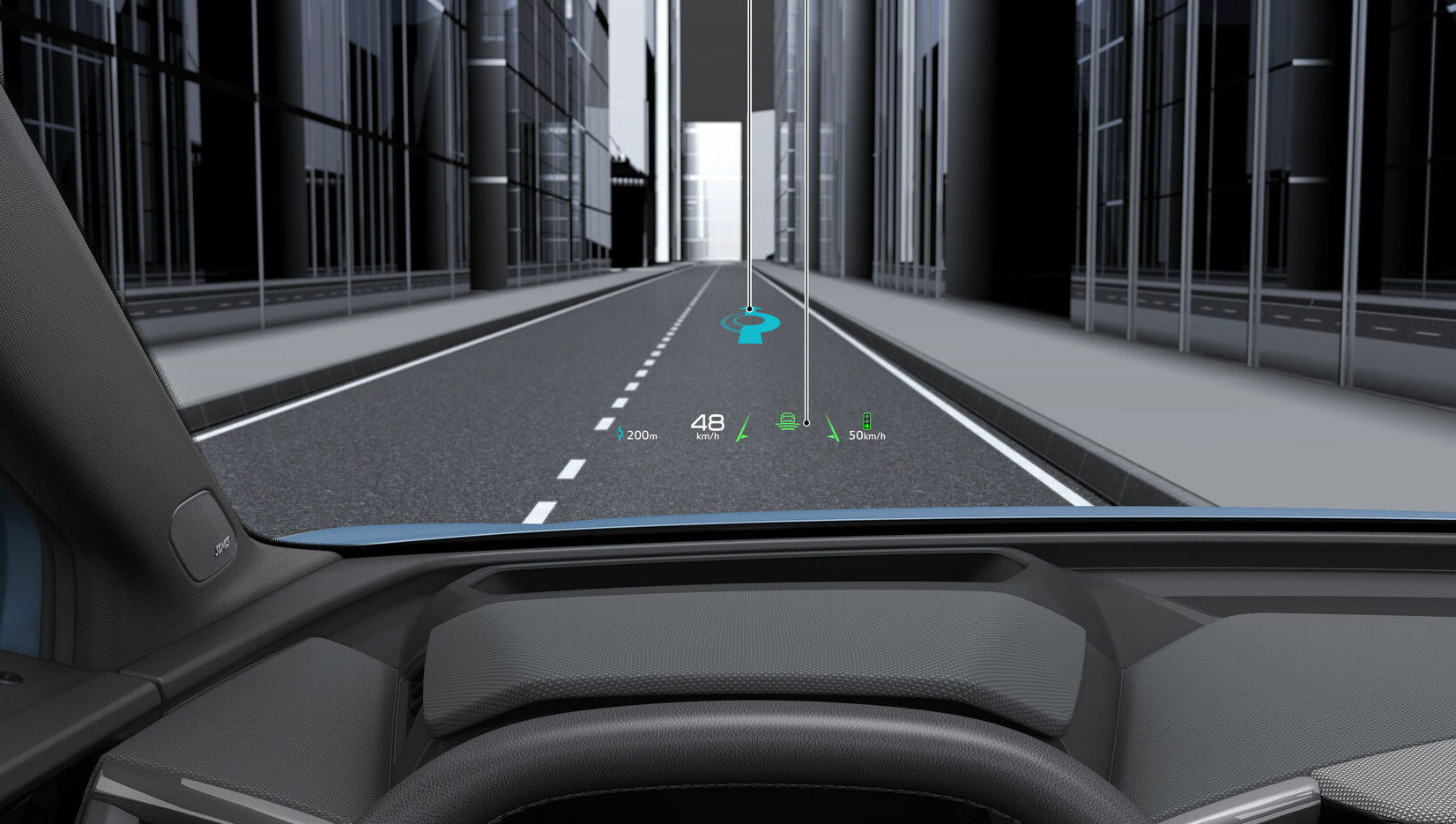
AR and VR head-up display developments aim to improve future vehicle displays, JLR set to trial new tech
By onMarket Trends | Technology
AllFocal Optics says its new lens for augmented and virtual reality could bolster the safety benefits of future vehicle head-up displays (HUDs).
The AR and VR headsets provide crystal-clear vision, whether the wearer typically wears glasses or not, or has an astigmatism. That’s because the lens beams a clear picture directly to your retina, bypassing the need for glasses entirely, according to an article from Wired.
“The projected image remains in focus through a camera, even when the focal length is adjusted from 12 inches (30 cm) to 78 inches (200 cm), and the rest of the camera’s view becomes blurry,” the article states. “As well as products that sit close to the eye, AllFocus Optics says its technology could be used for other applications too, like the rear-view screens used by some cars in place of mirrors, which can appear blurred to glasses wearers.”
Pawan Shrestha, AllFocal Optics CEO and co-founder, told Wired a “slightly customized” design of the technology could make it work for car HUDs as well, with drivers only having to switch their attention between the display and the road, taking “almost zero reaction time,” rather than mechanically shifting the ocular lens.
With a new nanophotonic lens, information projected from a HUD would always be in focus to be read, processed, and acted upon a bit quicker, according to Wired.
“Current systems are installed into the dashboard and project onto the windshield, creating a digital display roughly in the driver’s eyeline and saving them the need to look down at the dashboard,” the article states. “Despite being in the right place, the projection is not the same distance from the driver’s eyes as the road, and although refocusing between the two happens quickly, AllFocal Optics says this increases noticeably with age.”
Shrestha told Wired the lenses could be ready for a small batch of specialist equipment, such as night vision scopes, within a few months, and that an automotive application could come to market in around two years.
JLR (formerly Jaguar Land Rover) is set to begin a trial of the technology this year, according to Wired.
Valerian Meijering, JLR’s subject matter expert for extended reality, told WIRED, “Through this research project with AllFocal Optics, we are exploring new ways to present information via head-up displays in a way that makes it even simpler to read. By further reducing the amount of vision strain and focus that would typically be needed, we could improve cognitive processing time, especially for those with vision impairments, and continue to improve comfort and safety for our clients.”
JLR, in collaboration with the Centre for Advanced Photonics and Electronics (CAPE), has been working on an Immersive Head-Up Display (iHUD) for two years and recently extended the project for another two years.
They are developing a next-generation vehicle HUD with a large projected image that will be high in resolution, brightness, and depth perception.
Five HUD patent applications have been filed so far, four of which include various ways to achieve depth perception. A fifth is on the HUD using the whole windshield and vehicle interior, according to a University of Cambridge article.
Because of the potential safety benefits of evolved HUDs, Wired surmises that’s the reason why other companies are making changes; for example, Porsche’s HUD system with augmented reality in the new electric Macan and Hyundai Mobis’s Holographic HUD.
Porsche’s system attaches virtual hazard signs to dangers ahead, such as following too closely. Porsche says the AR HUD appears as a virtual image 87 inches in size at a distance of 33 feet in front of the driver.
“Virtual objects are projected onto the actual surroundings with precise localization for faster and simpler comprehension of information about navigation and driver assistance systems,” a Porsche press release states. “When you’re turning, for example, virtual navigation arrows hover at intersection height and show the way. Warnings, too, are projected onto the actual obstacle to prevent misunderstanding.”
The Hyundai Mobis HUD technology can be placed anywhere on the windshield. According to a press release from the company, the vehicle’s front window is transformed into a transparent screen through the use of a special film with an optical component called a Holographic Optical Element.
“From the outside, it looks like a transparent glass window but it presents a clear display for the driver and passengers even in bright outdoor environments through high brightness and color reproduction,” the release says.
Co-developed with German optical company and lens manufacturer Zeiss, pre-development of the holographic HUD is expected to be completed by the first half of 2026, followed by mass production in 2027, according to the release.
Audi also added to its HUD, including placing augmented arrows on the road to help with navigation. According to an Audi press release, the display reflects important information on the windshield in two separate levels, the status section and the AR section.
“The information provided by some of the assist systems and the turning arrows of the navigation system, as well as its starting points and destinations, are visually superimposed in the corresponding place on the real-life outside world as content of the AR section and displayed dynamically,” the release states.
Envisics, which is backed by JLR, General Motors, Hyundai, and Stellantis, is also working on a next-generation Holographic Waveguide Technology — a single-plane, wide field of view HUD that enables AR.
Envisics’ first HUD with augmented reality is slated for the 2026 Cadillac Lyriq-V. Cadillac states that the feature uses real-time projection to display information on two viewing planes, providing the driver with information where it’s most helpful and intuitive, such as navigational and directional cues, speed, and Driver Assist information.
Images
Featured image: Illustrative graphic of an Audi A5 head-up display from September 2024. (Provided by Audi)
Secondary images provided by Porsche, Hyundai Mobis, and Audi.



